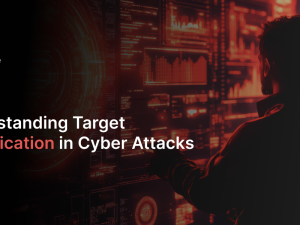Executives are accustomed to being in control, such as signing off on approvals, leading major decisions, and managing high-stakes communications daily. But in the digital battlefield, that authority has made them a prime target. Welcome to the world of whaling, a sophisticated form of cyberattack where the hunters aren’t after data in bulk; they are after you.
The Subtle Art of Whaling
Unlike typical phishing emails that blast out to thousands of random users, whaling attacks are tailored to look legitimate and personal. Cybercriminals study their target communication style, job role, and even writing tone from public data or leaked emails. Then, they craft highly convincing messages, often impersonating trusted business partners, lawyers, or internal departments.
A single deceptive email can trigger a disastrous decision: approving a fraudulent wire transfer, sharing confidential deal information, or unintentionally giving intruders access to critical systems. The attacker does not exploit a system vulnerability; they exploit human authority and trust.
In one well-documented case, the CEO of an Austrian aerospace company approved a €50 million transfer after receiving what appeared to be an email from his board. The email was fake, but it was professionally written, contextually accurate, and emotionally timed; everything a whaling attack is designed to be.
Why Executives Are Prime Targets
Executives represent both access and influence, the two things cybercriminals crave most. They often have clearance to financial systems, privileged information, and executive decision power, yet they’re less likely to undergo the same security awareness training as regular employees.
Moreover, senior leaders are often the busiest people in an organization, making them more prone to rushing through digital communications. Attackers take advantage of that urgency, crafting requests that appear time-sensitive, like “approve this payment immediately” or “urgent legal response needed.”
The problem is not a lack of intelligence, but a matter of context. Executives are trained to act fast, lead confidently, and trust their teams, and whaling attacks exploit those exact leadership strengths.
Building Executive-Level Cyber Awareness
Protecting against whaling is not about distrusting your inbox, but about retraining intuition. Executives must develop cyber instinct the same way they have honed business instinct: by asking the right questions. Here’s how:
- Pause before taking action. If a message seems urgent, sensitive, or unusual, verify it through a different channel, such as a call, a direct message, or an internal system.
- Adopt secure communication protocols. Sensitive financial or legal approvals should never rely solely on email. Implement multi-layer approval systems or digital signatures.
- Lead by example. When executives demonstrate good security behavior, like using MFA or questioning suspicious requests, the entire organization follows.
- Engage in specialized awareness training. Executive-focused cybersecurity programs help leaders understand modern threats and simulate real-world social engineering attempts.
By embracing cybersecurity awareness at the leadership level, executives don’t just protect themselves; they protect their entire organization.
Leadership Beyond the Inbox
Whaling attacks prove that cybersecurity isn’t just a technical issue; it is a leadership issue. A single careless moment at the top can cascade into financial loss, regulatory trouble, and brand damage. But awareness, vigilance, and example-setting can turn that vulnerability into strength.
At Terrabyte, we believe that true cybersecurity starts with informed leadership. Through awareness initiatives, strategic insight, and advanced protection technologies, we help executives build the confidence to lead securely in an age where trust can be weaponized.




